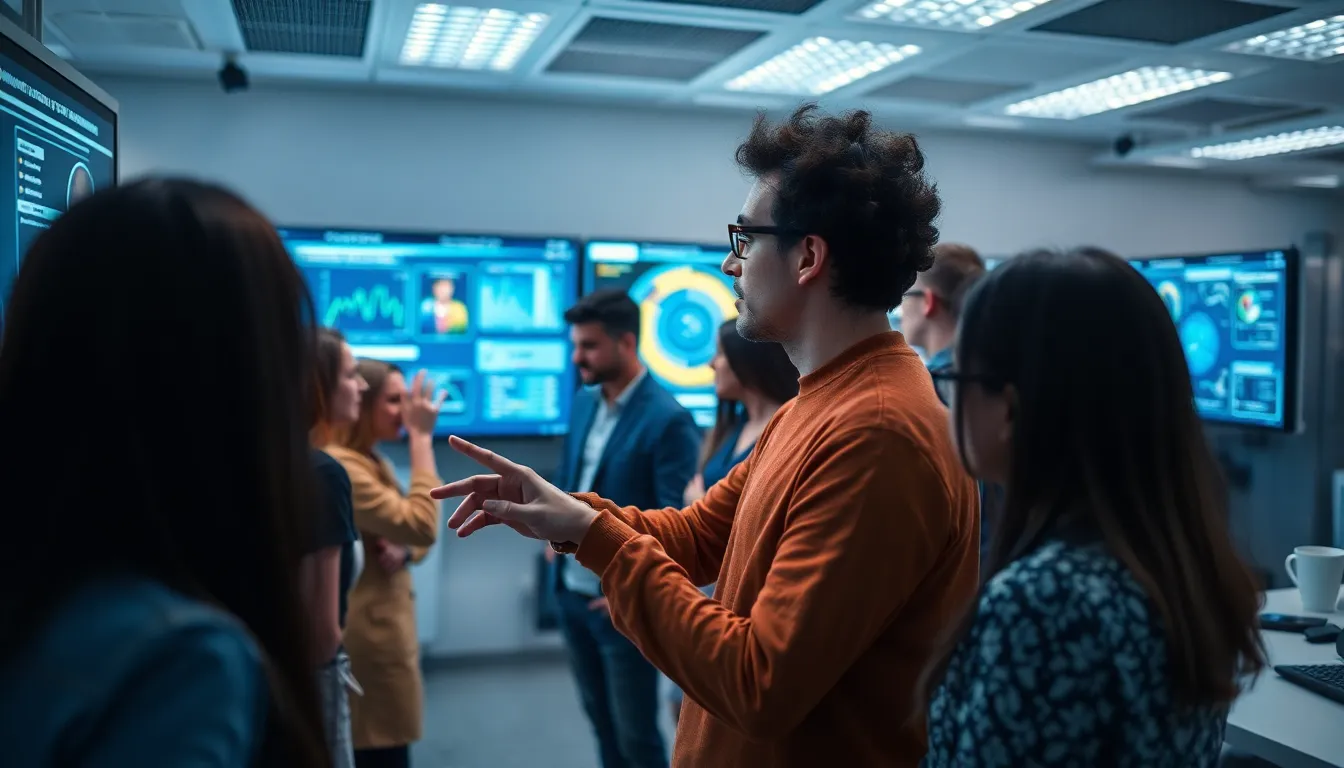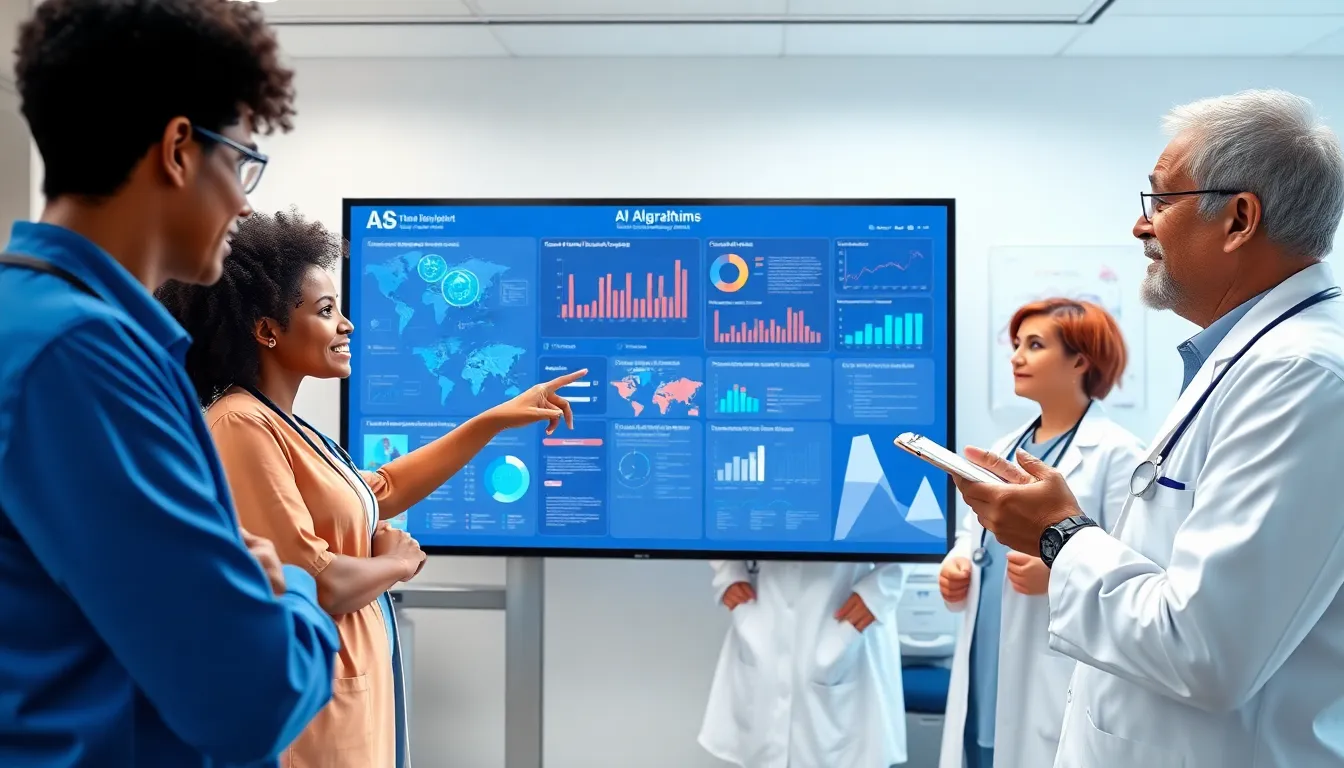In the ever-evolving world of artificial intelligence, zero-shot learning is the new kid on the block, and it’s turning heads. Imagine a system that can recognize new concepts without ever having seen them before—sounds like magic, right? Well, it’s not Hogwarts; it’s an innovative approach that’s redefining how machines learn.
Table of Contents
ToggleOverview Of Zero-Shot Learning
Zero-shot learning represents a revolutionary shift in artificial intelligence. It empowers systems to identify new concepts without prior experience or labeled data.
Definition And Importance
Zero-shot learning occurs when models recognize objects or tasks not encountered during training. This ability stems from leveraging knowledge from existing classes to infer attributes of unseen classes. For instance, if a model learns to identify cats and dogs, it can deduce features of a horse based on its attributes. The significance of this technology lies in its efficiency and adaptability, especially in dynamic fields where new categories frequently emerge.
Key Differences From Traditional Learning
Traditional learning methods often require extensive labeled datasets for each category. For example, classifying images typically mandates collecting numerous samples for effective training. Zero-shot learning diverges from this paradigm by utilizing semantic relationships among classes. Instead, it perceives similarities and differences, allowing for generalized understanding across various domains. The reliance on attribute-based frameworks enhances flexibility and reduces the burden of data collection, which remains a prominent downside of conventional approaches.
Applications Of Zero-Shot Learning

Zero-shot learning finds diverse applications across various fields, significantly enhancing how technology interacts with data. Its ability to generalize knowledge proves invaluable.
Natural Language Processing
In natural language processing, zero-shot learning facilitates tasks like text classification and sentiment analysis. Models using this approach can understand new topics without specific training. For instance, a sentiment analysis model can assess user opinions about an unseen product based on its knowledge of existing products and features. This capability simplifies the adaptation to different domains, making it easier to cater to user needs. Organizations benefit from reduced labeling costs and quicker deployment of language models. Furthermore, the framework ensures that advancements in NLP technologies continue to evolve with minimal additional data requirements.
Computer Vision
Zero-shot learning also revolutionizes computer vision applications. It enables object recognition systems to identify items that weren’t present in the training dataset. For example, a model trained on cats and dogs can identify a horse by understanding shared attributes instead of needing direct examples. The technology enhances efficiency in image classification tasks where new categories constantly emerge. Businesses and researchers leverage zero-shot models to minimize the need for extensive image datasets, accelerating project timelines. Additionally, this approach broadens the potential for real-world applications, including autonomous vehicles and surveillance systems, by allowing them to recognize and react to previously unseen objects.
Challenges In Zero-Shot Learning
Zero-shot learning faces several challenges that impact its effectiveness. These challenges complicate its successful implementation across various fields.
Data Scarcity
Limited datasets pose a significant hindrance. Training models on a wide range of classes requires diverse and extensive labeled data. In many cases, obtaining this data is impractical or impossible, especially for rare classes. Insufficient examples lead to inadequate attribute representation, causing performance drops. Furthermore, reliance on existing classes means the absence of relevant data for unseen classes can hinder generalization capabilities. Addressing these data shortcomings remains a critical challenge in deploying zero-shot learning effectively.
Generalization Issues
Generalization remains a prominent hurdle in zero-shot learning. Models often struggle to accurately extend learned relationships to unseen categories. Variations in attributes among classes can lead to misclassification when attributes do not align closely. For example, similar features in different classes might confuse models trained on specific attributes. Additionally, the semantic relationships used for inference may not always reflect real-world distinctions, complicating the recognition process. Improving generalization methods is essential for achieving reliable performance in dynamic applications of zero-shot learning.
Future Directions In Zero-Shot Learning
Innovations in zero-shot learning continue to shape the landscape of artificial intelligence. Research focuses on enhancing models to improve their ability to generalize from seen to unseen classes.
Advances In Algorithms
Recent developments in algorithms significantly enhance zero-shot learning performance. Enhanced techniques, such as attention mechanisms and generative models, boost the robustness of these systems. Researchers explore hierarchical attribute representations, increasing the contextual relevance for unseen categories. Moreover, advancements in deep learning architectures, like Graph Neural Networks, improve the interaction between data points. Continuous experimentation with various loss functions aims to optimize learning efficiency. These algorithmic advancements collectively contribute to more accurate predictions and better adaptability in complex tasks.
Integration With Other AI Techniques
Combining zero-shot learning with other AI techniques elevates its practical applications. Integrating reinforcement learning can help refine models through feedback loops, optimizing decision-making processes. Moreover, merging zero-shot learning with transfer learning enhances the ability to learn from related tasks. This integration supports a broader knowledge base, improving generalization. Additionally, employing natural language processing tools allows for refined semantic understanding, facilitating more nuanced reasoning. These collaborative approaches widen the horizon for zero-shot learning, creating pathways for innovative, real-world applications.
Conclusion
Zero-shot learning is reshaping the landscape of artificial intelligence by enabling systems to recognize and understand new concepts without prior exposure. This innovative approach not only enhances efficiency but also broadens the applicability of AI across various domains. As research continues to tackle existing challenges such as data scarcity and generalization, the technology’s potential is set to expand further.
The integration of zero-shot learning with advanced algorithms and other AI techniques promises to unlock new possibilities. As businesses and researchers adopt these methods, the impact on industries will be profound. With its ability to adapt and thrive in dynamic environments, zero-shot learning is poised to become a cornerstone of future AI advancements.





